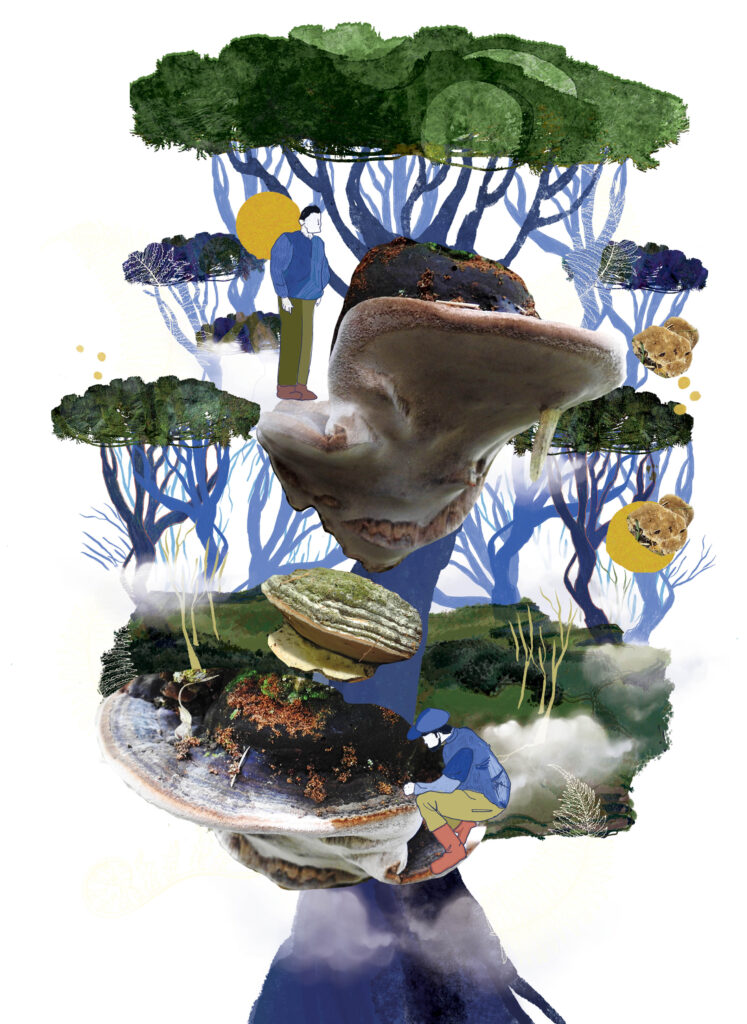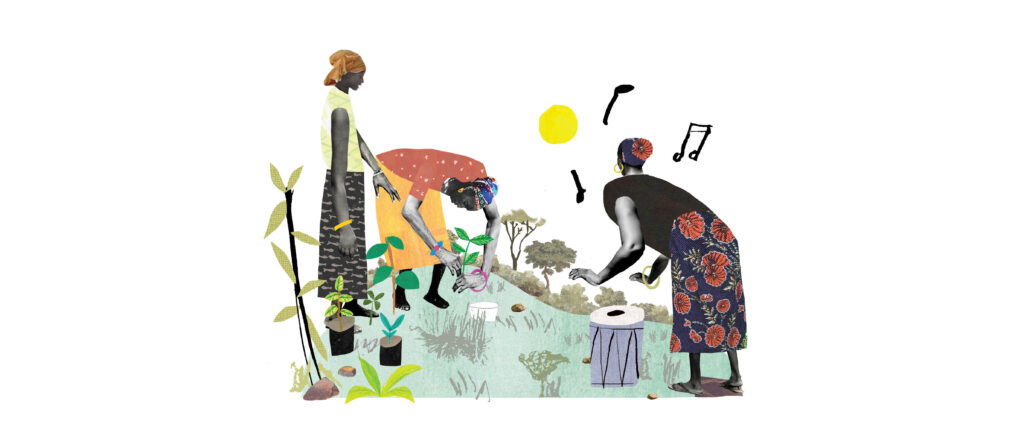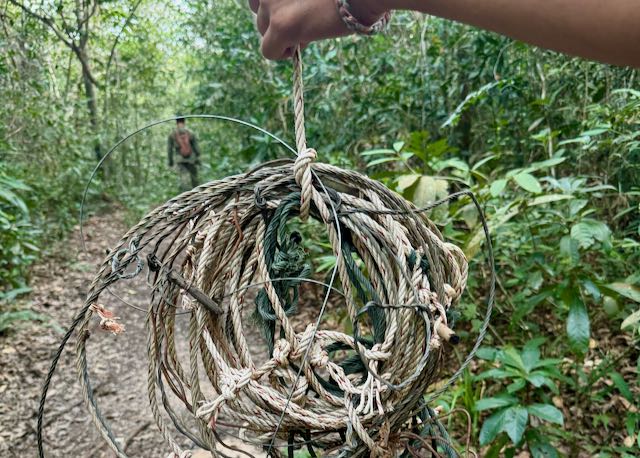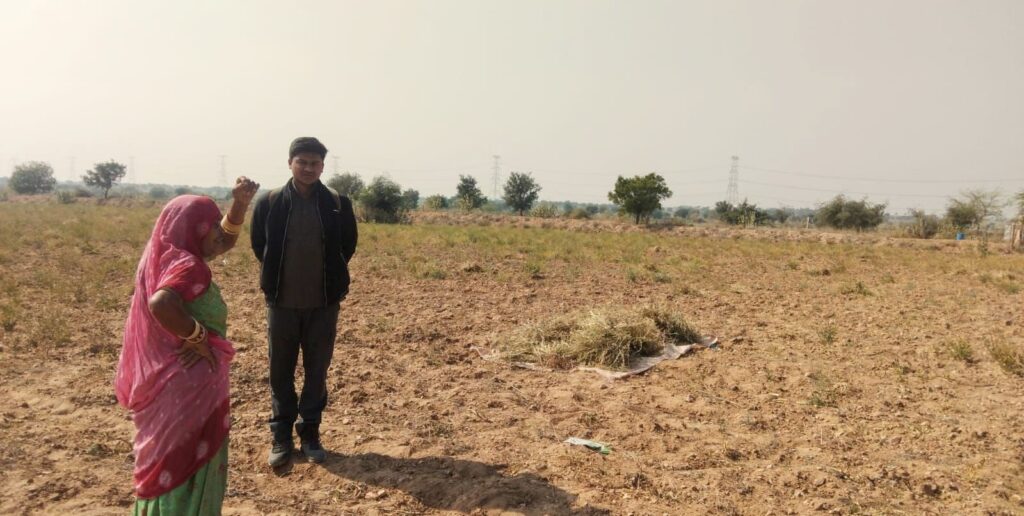As a researcher, one gets to travel to various places, soak in the beauty of different ecosystems, observe diverse cultures, and learn about the complexities that shape power dynamics within a context. Travelling to Tral, a sub-district located in the Pulwama district of Kashmir, I experienced all the above aspects in spades. Looking at the gushing water streams flowing parallel to the coniferous forests (mostly consisting of pine and deodar trees), the lush green meadows, and the snow-capped Himalayas encompassing the region, all at once made me want to linger in the moment.
However, the eerie normalcy around the presence of armed forces throughout most of my journey from Srinagar brought me back to the reality of being in one of the most conflict-ridden areas in the world. There has been much written about the history of violence in the region, but listening to a villager narrating their lived reality evokes something visceral.
Such a conversation was not long before being invited by one of the residents of Firastan* village for a sumptuous wazwan meal. The meal allowed for some space and time to discuss and analyse the reasons for a Gram Sabha—the assembly of all the people of a village, who elect the general body of the Gram Panchayat or the village council, which forms the basic governing institution in India—that was to be held earlier in the day but failed to take place.
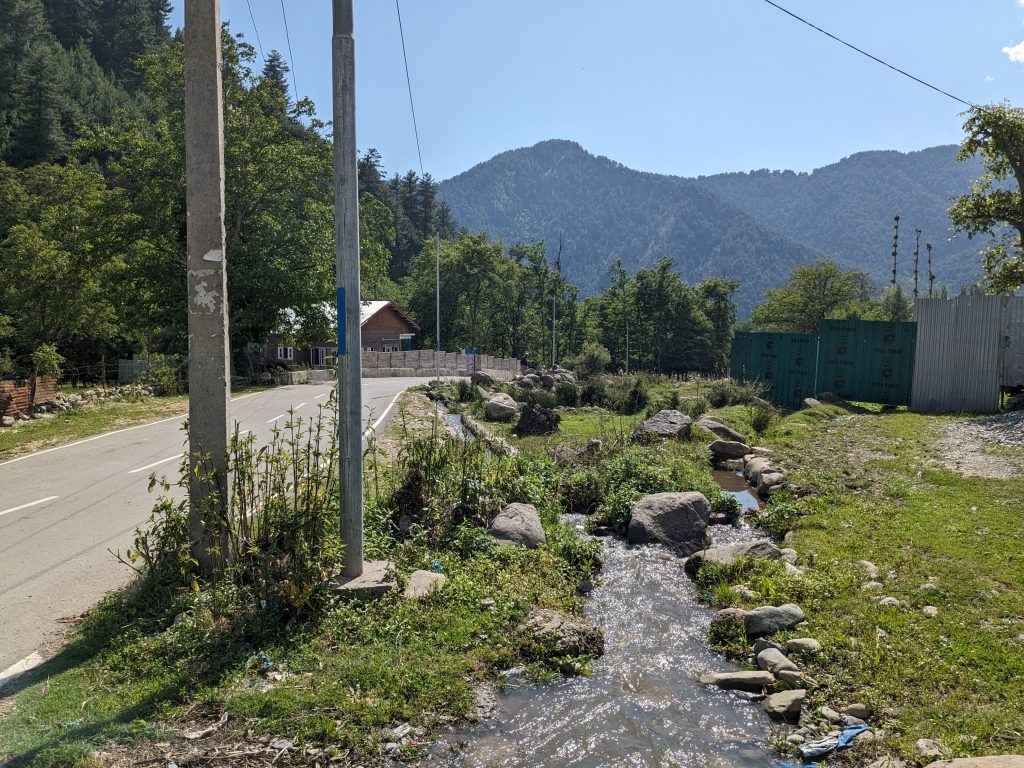
The abrogation of Article 370 of the Constitution of India took away the special status of Jammu and Kashmir (J&K)—which granted autonomy over the internal administration of the state—but it also meant that all the rights and laws that are applicable to every citizen in the country would extend to the now union territory.
According to the 2011 Census, Scheduled tribes form 11.91 percent of the total population of J&K. Post the Jammu and Kashmir Reorganisation Act (2019), one of the most significant laws concerning the scheduled tribes and other traditional forest dwellers, widely known as the Forest Rights Act (FRA), 2006, came into effect in the area. However, for more than a year the law existed only on paper and there were no efforts made to implement it on ground.
Local politics shape community forest rights
The purpose of my travel to Kashmir was to understand how the process pertaining to the recognition of Community Forest Rights (CFR) under FRA unfolds on the ground. That afternoon in Firastan village, a Gram sabha was scheduled to pass a resolution declaring approximately 400 sq. kilometres of their forest as a community forest resource under the FRA.
On arriving at the village, I observed a small gathering of 10–15 men, including the Sarpanch (village head; also the chairperson of Forest Rights Committee)—from a population of over 1000 people. This meant that the resolution could not be passed because at least two-thirds of the entire population needs to be present to fulfil the quorum.
Why did this happen? This can only be answered by understanding the formation of the Forest Rights Committee (FRC). The Gram Sabha elects from among its members, a committee of not less than ten but not exceeding fifteen persons as members of the committee. Several residents of Firastan mentioned that they do not recall any such Gram Sabha being held.
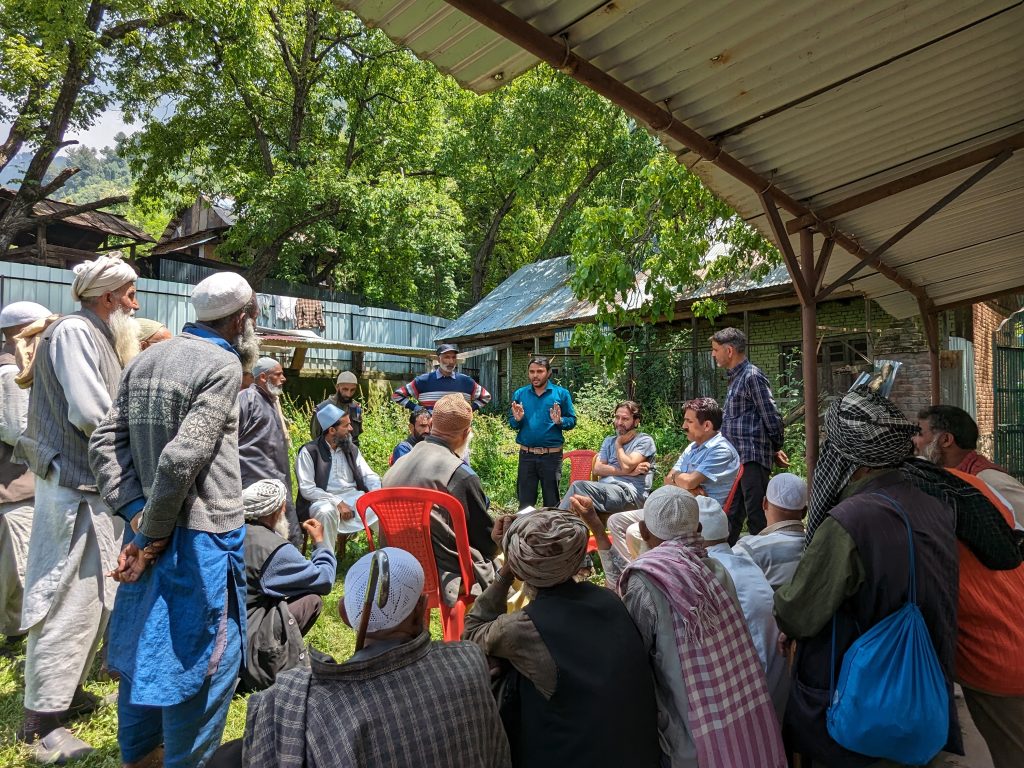
It was speculated that the Sarpanch called a meeting one day without informing the entire village and decided upon the committee members, who happened to be supporters of his candidature during the Panchayat elections. In the context of Firastan, overriding such a crucial process seems plausible as most of the people are unaware of the FRA and there is a lack of political goodwill in mobilising people on part of the Forest Department, which is the nodal agency for the implementation of Forest Rights Act (2006) in J&K.
Dr. Shaikh Ghulam Rasool, a climate justice activist and founder of the J&K Right to Information (RTI) movement, stated that the 10–15 people who were present for the meeting have dominated the decision-making process in the past as well. Later, it was found that the Sarpanch had initiated the Individual Forest Rights claims of a few individuals, but they were rejected at the sub-divisional level committee; the reason for this being that the application forms were filled incorrectly. However, the Sarpanch did not want the villagers to become increasingly aware about the Community Forest Rights process.
The officials were not even present at the venue to verify the CFR claims and the evidence presented by the Gram Sabha despite them being integral to the process where they need to provide their signatures on the resolution with the date, designation, and comments. Recognising Community Forest Rights under FRA would also imply the possibility of greater autonomy for the Gram Sabha towards utilisation of funds under the Compensatory Afforestation Fund Act (CAF), 2016.
In the past few years, there have been reports of fencing of the forests in J&K initiated by the Forest Department. On enquiring about it, I found that no one was completely sure about its purpose. Some people felt that the fencing was for commercial purposes and would ultimately alter and restrict the routes of Gujjars, Bakarwals, and Chopans—the pastoralist communities in Kashmir. Others believed that the fencing was undertaken to protect forests against the timber mafia and to facilitate the process of replantation by warding off livestock grazing. The reasons for fencing might be varied, but the uncertainty in the minds of local communities conveys a grim reality on the ground.
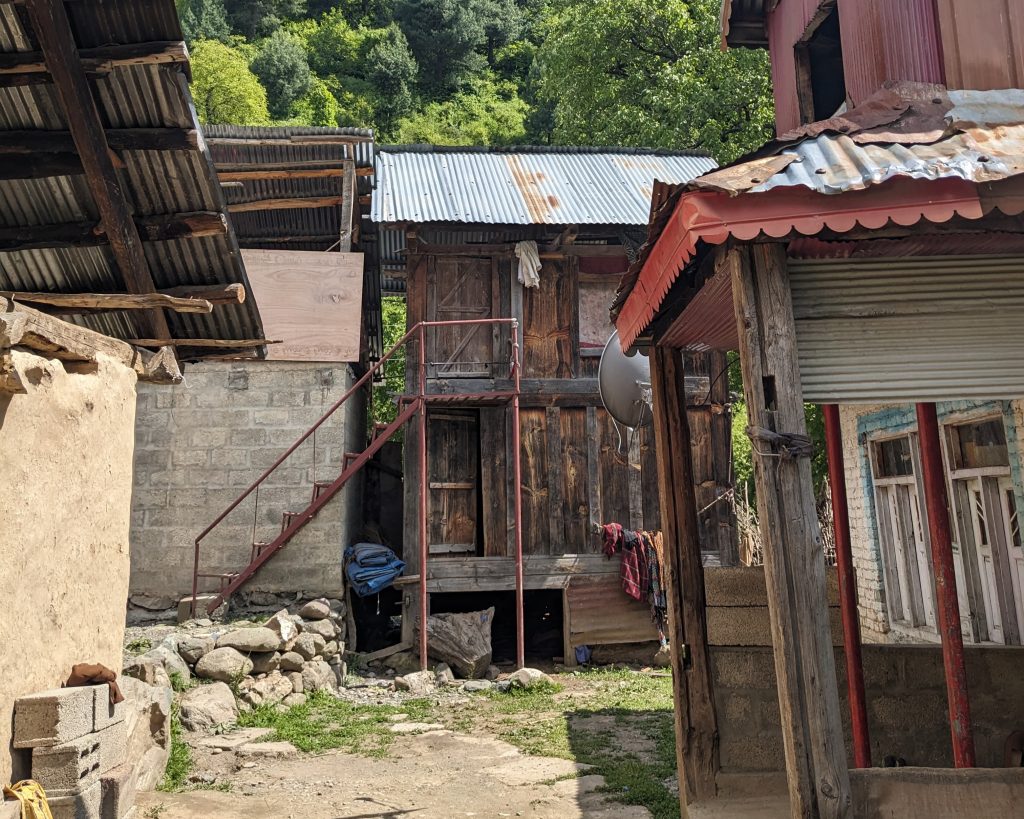
Negotiating the status quo
Conservation is complex, but it can only transpire when we integrate it with the livelihoods of local communities who are directly dependent on the forests for subsistence and ensure that their well-being is secured. Conversations with local activists revealed that at present, there is a sense of fear amongst the people who express dissent, since those voices are curtailed through stringent laws.
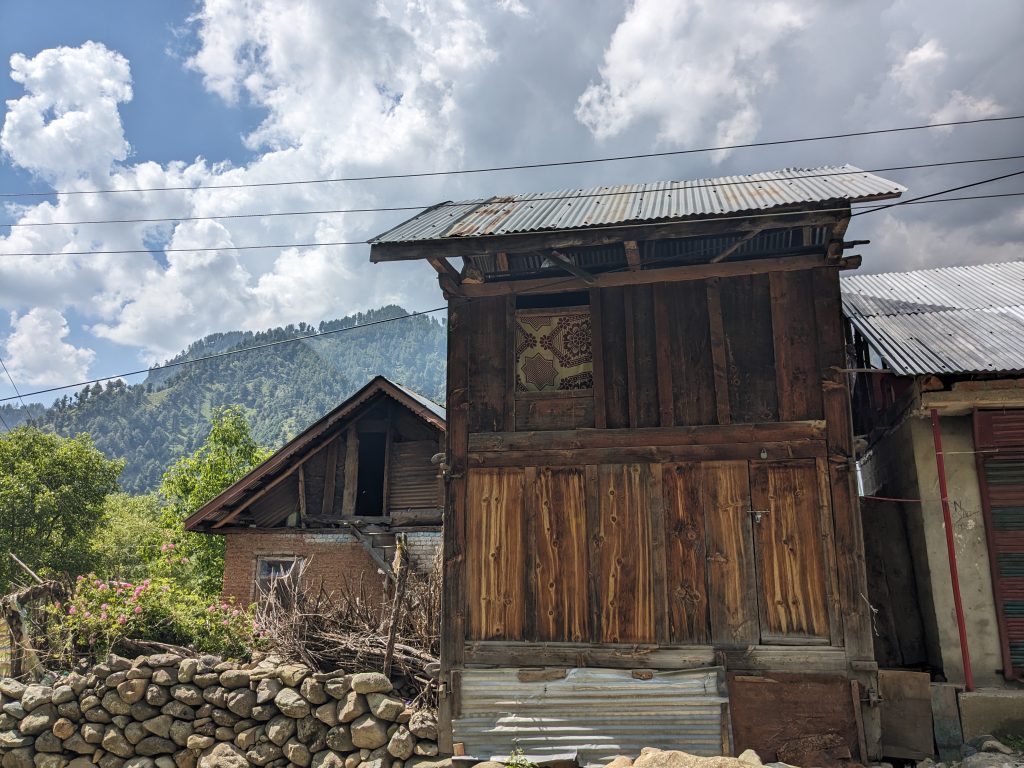
Against this backdrop, the FRA—a law that recognises community-led approach towards conservation—becomes the sole instrument that can secure the well-being of people as well as the region’s biodiversity. However, the status quo that is so deeply entrenched with corruption, fear among local people, and the skewed power dynamics in favour of the authorities, provide a glimpse into understanding the reasons for the current state of affairs.
As I made my return from Firastan, there was a brief stop somewhere in Tral where the conversations revolved around the date of the next Gram Sabha. Meanwhile, Subha Gujjar, a young person from Firastan whose primary livelihood is driving, talked about taking responsibility for educating people about the importance of FRA and ensuring a bigger turnout with at least 600 villagers present to pass the resolution.
I wondered what that meeting would look like and how it would go. However, the thought was suddenly eclipsed by the realisation that my time in Tral had ended and I would not attend that Gram Sabha in person. But the more important question was if Firastan would ultimately receive their Community Forest Rights title or not.
Drawing on the experience of recognition of Community Forest Rights titles in other parts of India, it will ultimately depend on a combination of factors, such as how aware the local communities are about the law, in addition to the bureaucratic bottlenecks that usually exist in the implementation of FRA. However, the Act only became operational in J&K in 2020, thus the trajectory of its impact will only unfold with time.
*A pseudonym is used for the village name
Further Reading
Parvaiz, A. 2020. Tribal population of Jammu and Kashmir cries foul about non-implementation of Forest Rights Act. https://india.mongabay.com/2020/01/tribal-population-of-jammu-and-kashmir-cries-foul-about-the-non-implementation-of-the-forest-rights-act/
The Scheduled Tribes And Other Traditional Forest Dwellers (Recognition Of Forest Rights) Act. 2006. https://tribal.nic.in/downloads/FRA/FRAActnRulesBook.pdf
Training Manual on Delineation And Mapping Of Community Rights And Community Forest Resources. 2016. https://tribal.nic.in/downloads/FRA/Manual%20II.pdf

